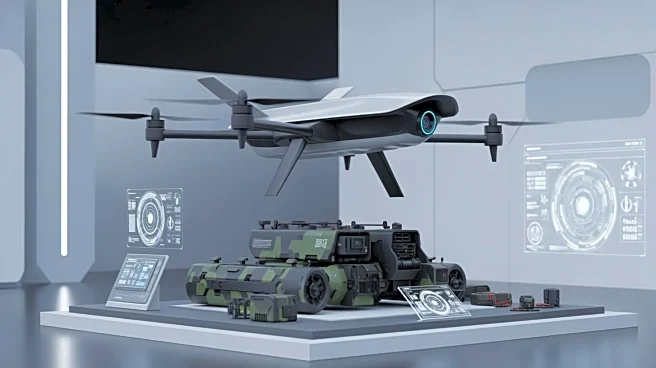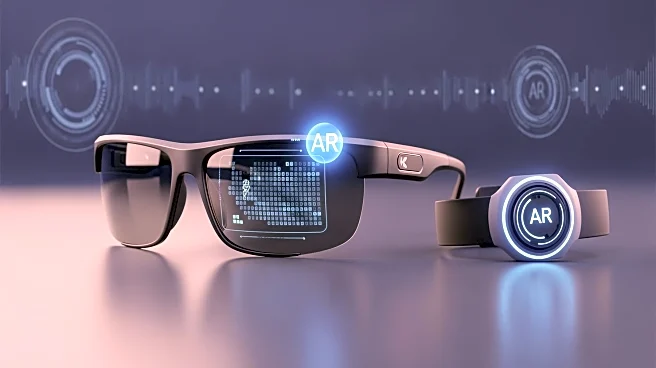What's Happening?
Anduril Industries has unveiled EagleEye, a mixed-reality system designed to enhance soldiers' situational awareness through advanced AI and mission command capabilities. The system, which includes a helmet,
visor, and glasses, integrates live video, sensors, and teammate tracking. This development follows a $159 million prototyping award secured in September 2025, marking a significant shift from software to hardware in military technology. The announcement was made at the AUSA 2025, highlighting the Army's interest in rapidly advancing its mixed-reality capabilities. The partnership with Meta on XR tooling further emphasizes the commercial-to-contract transition, aiming to reduce cognitive load and accelerate decision-making on the battlefield.
Why It's Important?
The introduction of EagleEye represents a pivotal moment in military technology, potentially transforming how soldiers operate in the field. By integrating advanced AI and mixed-reality systems, the technology promises to enhance situational awareness and decision-making speed, which could be crucial in combat scenarios. The $159 million investment underscores the Army's commitment to modernizing its equipment and staying ahead in technological advancements. This development could lead to faster procurement processes and increased collaboration between defense contractors and tech companies. The implications extend beyond the military, as advancements in mixed-reality technology could influence commercial applications and drive innovation in related fields.
What's Next?
As EagleEye moves from prototype to field testing, the Army will closely monitor its performance and integration with existing systems. The success of this project could lead to further investments and accelerated adoption of mixed-reality technologies in military operations. Stakeholders, including Congress and procurement officers, will need to address potential ethical and security concerns, particularly regarding data sharing and rules of engagement. The collaboration with Meta suggests that future developments may focus on enhancing the user experience and expanding the capabilities of mixed-reality systems. The outcome of this initiative could set a precedent for future military technology procurement and development strategies.











